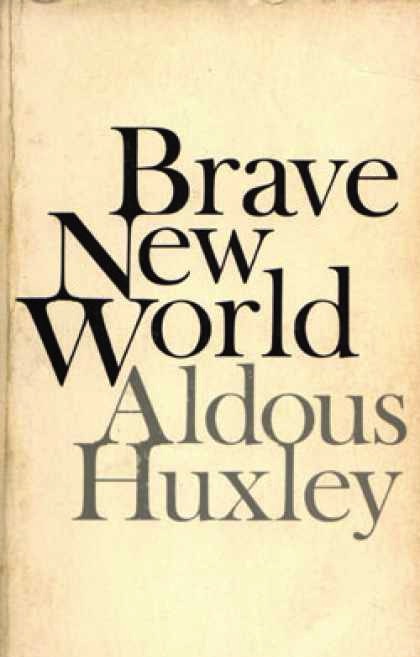Aldous Huxley, Brave New World, 1932
Huxley’s dystopic vision of a new brave world is set in the year 632 After Ford where ‘natural’ life is manufactured on a bio-tech assembly line. Humans are cloned and are propagated in-vitro (literally in bottles) in the Hatchery and then taken as sucklings to the external secretion factory: ”…1800 carefully labelled infants were simultaneously sucking down their pint of pasteurised external secretion”. A pasteurised paradise. All micro and macrobial life is pharmocologically controlled. These new humans are so rigorously conditioned that they are perfectly designed for the predetermined tasks that they are bred to fulfill. The Brave New social order is divided into casts, from Epsilons and Deltas (semi-morons), to Gammas, Betas, and Alphas (higher-intelligence). The Deltas and Epsilons are designed for tedious labour; they are dull-witted yet physically strong and resistant to pollution and monotonous work. The Gammas, Betas, and Alphas have higher intellectual faculties and designed for white-collar work. (This social bifurcation reminds also of H.G.Well’s Eloi, the above ground stupid but pretty fructovores, descendants of the bourgeoisie and the underground Morlocks: trecherous white things with rat-like fur and carbuncle eyes that keep the industry running in the subterranean bellows.)
The whole society of the regified World State revolves around economy and entertainment. People work the whole day in Ford-like production lines and in the evenings they go to the ‘feelies’, play electromagnetic golf or have recreational sex. The citizens of Brave New World have superficial friendships, yet love relationships, let alone family-relationships, are absolutely absent. What’s morefthere’s no such thing as ageing, but instead remain in perfect health until in their 60s they die in a special Hospital for the Dying, with the help of a prozac-ecstasy like substance ‘soma‘. After death. the remains of human bio-mass are efficently processed into useful materials like phosphor. This euthanasia by a hallucinatory, tranquilising medicament and ‘sustainable’ re-use of human remains bears a goose-bumping resemblance to the 1973 American science-fiction film Soylent Green.
